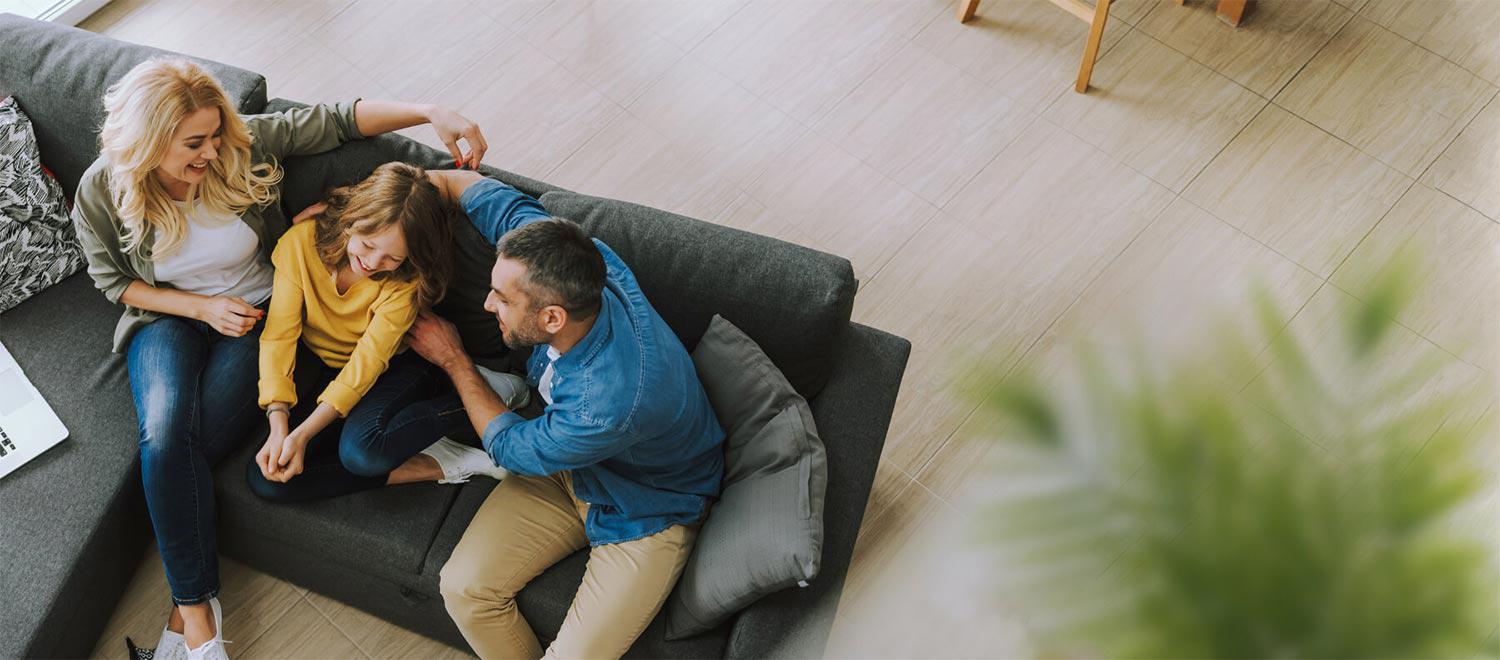Denver Indoor Air Quality Services
Your indoor air quality can affect your health and mood, along with the performance of your HVAC system. In Denver, which often suffers from low outdoor air quality during wildfire season, good indoor air quality is vital to living comfortably. Keep your home’s air cleaner and healthier with professional indoor air quality services.
Improve your indoor air quality with Denver services from local experts. Call (303) 622-3401.
Our Indoor Air Quality Solutions in Denver
Improving indoor air quality in Denver, CO, is vital, especially for those dealing with allergies or respiratory issues. If you notice your indoor air quality is low, we can help by:
- Inspecting for pollution sources. Our indoor air quality services in Denver can help you identify potential sources of home air pollution. Then, we can recommend ways to reduce sources of off-gassing and pollution.
- Increasing airflow and ventilation. Ventilation helps remove polluted air from your home and brings fresh air from outside. Airflow keeps air circulating in your home, so pollutants don’t get trapped in one room. Both help cycle your air, so undesirable particles can’t stay in your home for too long.
- Installing an air handler. Part of increasing airflow can include adding an air handler to your system. This gives treated air a push while it’s in the ducts, making it easier to distribute evenly throughout your home.
- Sealing and cleaning your air ducts. Leaking air ducts can move dusty, dirty air from an untreated part of your home, like an attic or crawl space, into the main living area. We can seal your ducts as well as clean your ductwork to keep dusty air out.
- Installing a humidifier. Colorado stays relatively dry throughout the year, which can be uncomfortable for your sinuses. Keep your home properly humid with a whole-home humidifier.
- Replacing your air filters. HVAC filters keep most particles from circulating in your home. They can get clogged quickly when air quality is low, so we make sure to switch to a fresh filter.
- Adding air quality boosters. We install specialized products to improve the air quality throughout your home. These include MicroPower, which can scrub particles from the air, and the OxyQuantum UV sterilization system, which fights bacteria and the odors they cause.
Residential homes are often full of sources of pollution. VOCs (volatile organic compounds) are one of the most common offenders. They can come from carpets, furniture upholstery, cleaning chemicals, paint, adhesives, smoke, gas-fired appliances, pesticides, building materials, and even scented home fresheners, like candles.
How to Know You Need Indoor Air Quality Services in Denver
While you usually can’t see poor air quality, you can often feel it*. Here are a few signs that the air in your home needs a boost in quality:
- You feel sick while at home, including:
- Worsening asthma, allergies, or respiratory conditions
- Headache
- Nausea
- Fatigue
- Dizziness
- Cold and flu-like symptoms
- Irritation or dryness of the eyes, nose, and/or throat
- Your air filters are getting dirty faster than you expect.
- There’s increasing dust in your home.
*If you’re experiencing adverse physical symptoms, make sure to see your doctor for more information.
Choose Denver’s Best Indoor Air Quality Experts
One Hour Heating & Air Conditioning technicians address multiple sources of pollution to get to the bottom of your air quality problem. Schedule a consultation for peace of mind. Whether you learn how to eliminate pollution sources or overhaul your HVAC equipment, we’ve got the expert training and tools to improve air quality at home.
Call (303) 622-3401 or book online to get started.
Denver Indoor Air Quality FAQs
What is good indoor air quality?
Good air quality has the minimum amount of pollutants possible. While you can’t eliminate airborne particles completely (as anyone who’s dusted the house can tell you), you can get rid of many.
To maintain the best possible indoor air quality, keep the humidity between 30 and 50%. Keep particles like smoke, dust, mold, and VOCs to a minimum. Healthy air should have no traces of dangerous gases, such as radon or carbon monoxide. Evacuate and call 911 if a detection device in your home finds signs of any dangerous gases.
How do you fix poor indoor air quality?
There are two main factors to improving indoor air quality: removing sources of pollution and increasing ventilation. Removing pollution includes habits like never smoking indoors, buying more natural cleaners, storing chemicals in a garage or safely sealed container, and not using scented air fresheners. You can also remove particles and pollutants from the air with an air purifier.
Increased ventilation, especially between indoors and outdoors, can also help reduce indoor pollution by giving it somewhere to go. An HVAC professional can tell you whether the ventilation and airflow in your home are adequate. You can also get in the habit of opening windows and outer doors for at least a few minutes a day to allow fresh air inside.
If you’re still struggling with indoor air quality, products like MicroPower and our Oxy Quantum UV sterilization system can scrub away polluting particles and minimize bacteria that cause foul odors. We can recommend the right combination of good HVAC habits and healthy air products for your home.
Are plants good for indoor air quality?
While plants can boost your mood, their effect on your indoor air quality is negligible. Plants take in carbon dioxide and release oxygen and some can even fix toxins like formaldehyde and benzene, removing them from the air. However, you’d need so many plants to make a noticeable dent in your air quality that it would essentially turn your home into a jungle! Stick to keeping a plant on your kitchen table for a mood booster instead.
Related Services
- If poor air quality has led to lots of particles in your air, consider duct cleaning to get a fresh start.
- An HVAC system that’s been straining against poor air quality will benefit from yearly maintenance to keep things working correctly.
- Reduce the number of gas-fired appliances in your home by switching to an electric air source heat pump.


